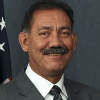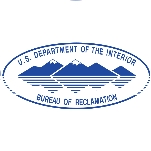Part of the Department of the Interior, the Bureau of Reclamation is all about dams and ambitious water projects. During the 20th Century, Reclamation was responsible for building some of the nation’s most ambitious dam projects and for helping shape the American West. Because of the hundreds of dams the bureau created, Reclamation is the largest wholesaler of water in the United States, responsible for bringing water to more than 31 million people and hundreds of farms. Also, the bureau is the second largest producer of hydroelectric power in the western United States, managing 58 power plants. Its legacy of dam building has made the bureau a magnet for controversy, both during its heyday of large water projects and today as ecosystems and fish species struggle to survive downstream of river diversions.
By the turn of the 20th Century, Western farmers and settlers had clamored long and hard for the federal government to assist with the reclaiming of arid lands where water supplies were limited. In response to the lobbying effort, Congress adopted the Reclamation Act of 1902, which led to the establishment of the US Reclamation Service within the US Geological Survey (USGS). The new Reclamation Service studied potential water development projects in each Western state with federal lands because revenue from the sale of such lands was the initial source of the program’s funding.
The History of Large Federal Dams
(PDF)
- Hydraulic Investigations and Laboratory Services Group
- This group applies hydraulic modeling, analysis and field testing expertise to the solution of water resources, hydraulics and fluid mechanics problems.
|
Communications Products Inc
|
$137,220,804
|
|
Shimmick Construction Company
|
$47,913,400
|
|
Alstom
|
$42,343,705
|
|
Grand Coulee Consortium
|
$41,537,535
|
|
MWH Global
|
$38,556,790
|
|
Ajac Enterprises
|
$38,363,269
|
|
URS Corporation
|
$37,500,929
|
|
Delhur Industries
|
$36,397,324
|
|
The Gardner-Zemke Company
|
$33,955,088
|
|
Warwick & York
|
$33,538,815
|
DD-M Crane and Rigging of Alameda, CA, was awarded a $3.2 million contract by Reclamation as part of a series of construction contracts for Dam Safety Modifications at Folsom Dam and Reservoir.
Bureau Violates Endangered Species Act
Opening dam's floodgates provokes controversy
(by Candus Thomson, Seattle Times)
- Table of Contents
- Overview
- History
- What it Does
- Where Does the Money Go
- Controversies
- Suggested Reforms
- Comments
- Leave a comment

Brenda Wren Burman, who during the George W. Bush administration served as deputy commissioner of the Bureau of Reclamation (USBR), was confirmed by the U.S. Senate on November 16, 2017, to lead the agency. The USBR is responsible for managing 475 dams and 337 reservoirs and doling out water to agricultural and residential users, as well as producing power from 53 hydroelectric power plants. Nominated to the post by President Donald Trump on June 26, 2017, Burman will be the first woman to lead the agency.
The daughter of Tim and Pat Burman, Brenda Burman was born in California and grew up in Minnesota and New Jersey. She earned a B.A. from Kenyon College in Gambier, Ohio, where she played field hockey, in 1989. She worked as a volunteer trail crew member at Carlsbad Caverns National Park in New Mexico. Later, she worked as a park ranger at the Grand Canyon before going to law school at the University of Arizona. After she earned her J.D. in 1996, Burman served as a clerk on the Wyoming Supreme Court.
Burman worked for four years in private practice as an attorney handling natural resource issues before going to work in 2002 as legislative counsel for energy and water for then-Sen. Jon Kyl (R-Arizona). Both in private practice and while working for Se. Kyl, she dealt extensively with Native American water rights issues. In 2005, Burman joined the Department of the Interior as counselor to the assistant secretary for water and science, Mark Limbaugh. In June of that year, she began her first stint at USBR as deputy commissioner for external and intergovernmental affairs, which made her responsible for relationships with federal, state and local governments, as well as citizen and other nongovernmental groups. She rejoined the agency’s parent department, Interior, as a deputy assistant secretary in 2007.
As the Bush administration was leaving office, Burman found work as a senior water policy administrator for The Nature Conservancy. In 2011, she joined the Metropolitan Water District of Southern California as special projects manager, handling issues pertaining to the Colorado River and the Sacramento-San Joaquin River Delta.
Burman joined the Salt River Project, the major electric utility for the Phoenix area, as well as a water company, as its executive water policy adviser and director of water strategy in 2015, a job she held at the time of her nomination to the Bureau of Reclamation.
Burman enjoys hiking and following the Arizona Diamondbacks baseball team.
-Steve Straehley, David Wallechinsky
To Learn More:
Statement to Senate Committee on Energy and Natural Resources

Estevan López, who worked on water issues in his native New Mexico for years, was put in charge of the Bureau of Reclamation in October 2014, and was confirmed as its commissioner on December 17 of that year. He served until Donald Trump took over the U.S. presidency on January 20, 2017. The Bureau of Reclamation is the largest wholesaler of water in the United States, responsible for operating 337 reservoirs and bringing water to more than 31 million people and thousands of farms. The bureau is also the second largest producer of hydroelectric power in the western United States, managing 53 power plants.
The son of small-time ranchers, López grew up in Peñasco, New Mexico. His educational background isn’t in water; instead, he earned B.S. degrees in chemistry and petroleum engineering from New Mexico Institute of Mining and Technology in 1979. López’s early career was spent in the petroleum industry, in which he worked as an operations engineer and well supervisor for Arco Alaska.
But he returned to New Mexico and became an engineer for that state’s Public Utility Commission. He later went to work for Santa Fe County, first as utility department director, and then as land use director, and was later put in charge of both departments. From 2001 to 2003, he served as county manager.
López has long had close ties to water on an elemental level—before joining the federal government, he sat on the boards of several acequias, or community-owned irrigation systems in and around Peñasco. He was also the president of the Peñasco Domestic Water Users
Association.
In January 2003, then-Governor Bill Richardson (D) appointed López to lead New Mexico’s Interstate Stream Commission, which negotiates with other states about water management. Concurrently, he served as the deputy state engineer. Among the projects he worked on was a diversion of the Gila River. It created controversy in the state, with some residents strongly backing the project for its utility in irrigation, with others wanting the river to be kept wild. More recently, the project, which has been in the planning stage for years, has been scaled back. López was reappointed as commissioner by Gov. Susana Martinez (R) in 2011 and he held the post until joining the Bureau of Reclamation.
López and his colleagues in the Department of the Interior were working on a long-term plan to protect Lake Mead and prevent shortages of Colorado River water when Donald Trump was elected in November 2016. They weren’t able to finish the job and its future was in question as López left the Bureau as the new administration came in. The day before Trump’s inauguration, López did execute an agreement with the Gila River Indian Community to provide the community with $6 million in funding for water conservation in fiscal year 2017 to acquire water from Lake Mead.
López and his wife, Susana, have two adult children, Victoria and Juan.
-Steve Straehley
To Learn More:
Sharing Water, Building Relations: Managing and Transforming Water Conflict in the U.S. West (pdf)
- Latest News
- D.C. Public Schools will Teach all Second-Graders to Ride a Bike
- New Rule in Germany Limits Sales of Sex-Themed E-Books to 10pm to 6am
- What Happened to the 6-Year-Old Tibetan Boy the Chinese Government Kidnapped 20 Years Ago?
- U.S. Ambassador to Turkey Photoshops his Hair Color to Mock Turkish Mayor
- Mystery Artist Calls Attention to Unfixed Potholes by Drawing Penises around Them
Part of the Department of the Interior, the Bureau of Reclamation is all about dams and ambitious water projects. During the 20th Century, Reclamation was responsible for building some of the nation’s most ambitious dam projects and for helping shape the American West. Because of the hundreds of dams the bureau created, Reclamation is the largest wholesaler of water in the United States, responsible for bringing water to more than 31 million people and hundreds of farms. Also, the bureau is the second largest producer of hydroelectric power in the western United States, managing 58 power plants. Its legacy of dam building has made the bureau a magnet for controversy, both during its heyday of large water projects and today as ecosystems and fish species struggle to survive downstream of river diversions.
By the turn of the 20th Century, Western farmers and settlers had clamored long and hard for the federal government to assist with the reclaiming of arid lands where water supplies were limited. In response to the lobbying effort, Congress adopted the Reclamation Act of 1902, which led to the establishment of the US Reclamation Service within the US Geological Survey (USGS). The new Reclamation Service studied potential water development projects in each Western state with federal lands because revenue from the sale of such lands was the initial source of the program’s funding.
The History of Large Federal Dams
(PDF)
- Hydraulic Investigations and Laboratory Services Group
- This group applies hydraulic modeling, analysis and field testing expertise to the solution of water resources, hydraulics and fluid mechanics problems.
|
Communications Products Inc
|
$137,220,804
|
|
Shimmick Construction Company
|
$47,913,400
|
|
Alstom
|
$42,343,705
|
|
Grand Coulee Consortium
|
$41,537,535
|
|
MWH Global
|
$38,556,790
|
|
Ajac Enterprises
|
$38,363,269
|
|
URS Corporation
|
$37,500,929
|
|
Delhur Industries
|
$36,397,324
|
|
The Gardner-Zemke Company
|
$33,955,088
|
|
Warwick & York
|
$33,538,815
|
DD-M Crane and Rigging of Alameda, CA, was awarded a $3.2 million contract by Reclamation as part of a series of construction contracts for Dam Safety Modifications at Folsom Dam and Reservoir.
Bureau Violates Endangered Species Act
Opening dam's floodgates provokes controversy
(by Candus Thomson, Seattle Times)
Comments

Brenda Wren Burman, who during the George W. Bush administration served as deputy commissioner of the Bureau of Reclamation (USBR), was confirmed by the U.S. Senate on November 16, 2017, to lead the agency. The USBR is responsible for managing 475 dams and 337 reservoirs and doling out water to agricultural and residential users, as well as producing power from 53 hydroelectric power plants. Nominated to the post by President Donald Trump on June 26, 2017, Burman will be the first woman to lead the agency.
The daughter of Tim and Pat Burman, Brenda Burman was born in California and grew up in Minnesota and New Jersey. She earned a B.A. from Kenyon College in Gambier, Ohio, where she played field hockey, in 1989. She worked as a volunteer trail crew member at Carlsbad Caverns National Park in New Mexico. Later, she worked as a park ranger at the Grand Canyon before going to law school at the University of Arizona. After she earned her J.D. in 1996, Burman served as a clerk on the Wyoming Supreme Court.
Burman worked for four years in private practice as an attorney handling natural resource issues before going to work in 2002 as legislative counsel for energy and water for then-Sen. Jon Kyl (R-Arizona). Both in private practice and while working for Se. Kyl, she dealt extensively with Native American water rights issues. In 2005, Burman joined the Department of the Interior as counselor to the assistant secretary for water and science, Mark Limbaugh. In June of that year, she began her first stint at USBR as deputy commissioner for external and intergovernmental affairs, which made her responsible for relationships with federal, state and local governments, as well as citizen and other nongovernmental groups. She rejoined the agency’s parent department, Interior, as a deputy assistant secretary in 2007.
As the Bush administration was leaving office, Burman found work as a senior water policy administrator for The Nature Conservancy. In 2011, she joined the Metropolitan Water District of Southern California as special projects manager, handling issues pertaining to the Colorado River and the Sacramento-San Joaquin River Delta.
Burman joined the Salt River Project, the major electric utility for the Phoenix area, as well as a water company, as its executive water policy adviser and director of water strategy in 2015, a job she held at the time of her nomination to the Bureau of Reclamation.
Burman enjoys hiking and following the Arizona Diamondbacks baseball team.
-Steve Straehley, David Wallechinsky
To Learn More:
Statement to Senate Committee on Energy and Natural Resources

Estevan López, who worked on water issues in his native New Mexico for years, was put in charge of the Bureau of Reclamation in October 2014, and was confirmed as its commissioner on December 17 of that year. He served until Donald Trump took over the U.S. presidency on January 20, 2017. The Bureau of Reclamation is the largest wholesaler of water in the United States, responsible for operating 337 reservoirs and bringing water to more than 31 million people and thousands of farms. The bureau is also the second largest producer of hydroelectric power in the western United States, managing 53 power plants.
The son of small-time ranchers, López grew up in Peñasco, New Mexico. His educational background isn’t in water; instead, he earned B.S. degrees in chemistry and petroleum engineering from New Mexico Institute of Mining and Technology in 1979. López’s early career was spent in the petroleum industry, in which he worked as an operations engineer and well supervisor for Arco Alaska.
But he returned to New Mexico and became an engineer for that state’s Public Utility Commission. He later went to work for Santa Fe County, first as utility department director, and then as land use director, and was later put in charge of both departments. From 2001 to 2003, he served as county manager.
López has long had close ties to water on an elemental level—before joining the federal government, he sat on the boards of several acequias, or community-owned irrigation systems in and around Peñasco. He was also the president of the Peñasco Domestic Water Users
Association.
In January 2003, then-Governor Bill Richardson (D) appointed López to lead New Mexico’s Interstate Stream Commission, which negotiates with other states about water management. Concurrently, he served as the deputy state engineer. Among the projects he worked on was a diversion of the Gila River. It created controversy in the state, with some residents strongly backing the project for its utility in irrigation, with others wanting the river to be kept wild. More recently, the project, which has been in the planning stage for years, has been scaled back. López was reappointed as commissioner by Gov. Susana Martinez (R) in 2011 and he held the post until joining the Bureau of Reclamation.
López and his colleagues in the Department of the Interior were working on a long-term plan to protect Lake Mead and prevent shortages of Colorado River water when Donald Trump was elected in November 2016. They weren’t able to finish the job and its future was in question as López left the Bureau as the new administration came in. The day before Trump’s inauguration, López did execute an agreement with the Gila River Indian Community to provide the community with $6 million in funding for water conservation in fiscal year 2017 to acquire water from Lake Mead.
López and his wife, Susana, have two adult children, Victoria and Juan.
-Steve Straehley
To Learn More:
Sharing Water, Building Relations: Managing and Transforming Water Conflict in the U.S. West (pdf)
- Latest News
- D.C. Public Schools will Teach all Second-Graders to Ride a Bike
- New Rule in Germany Limits Sales of Sex-Themed E-Books to 10pm to 6am
- What Happened to the 6-Year-Old Tibetan Boy the Chinese Government Kidnapped 20 Years Ago?
- U.S. Ambassador to Turkey Photoshops his Hair Color to Mock Turkish Mayor
- Mystery Artist Calls Attention to Unfixed Potholes by Drawing Penises around Them






Comments